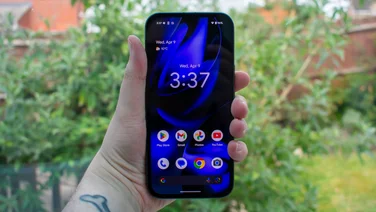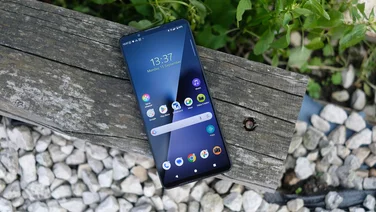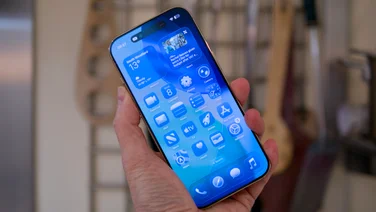To help us provide you with free impartial advice, we may earn a commission if you buy through links on our site. Learn more














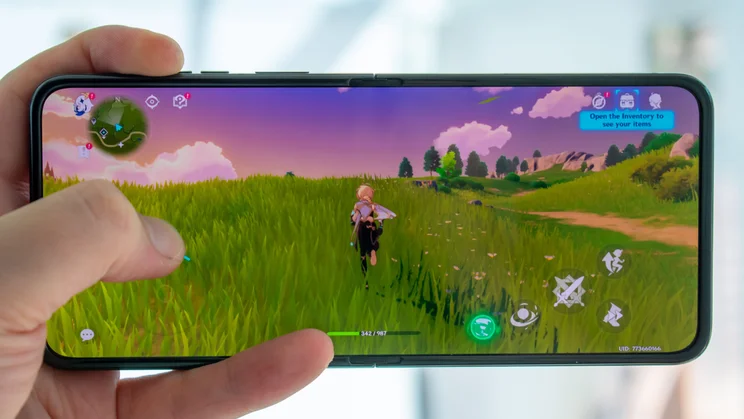











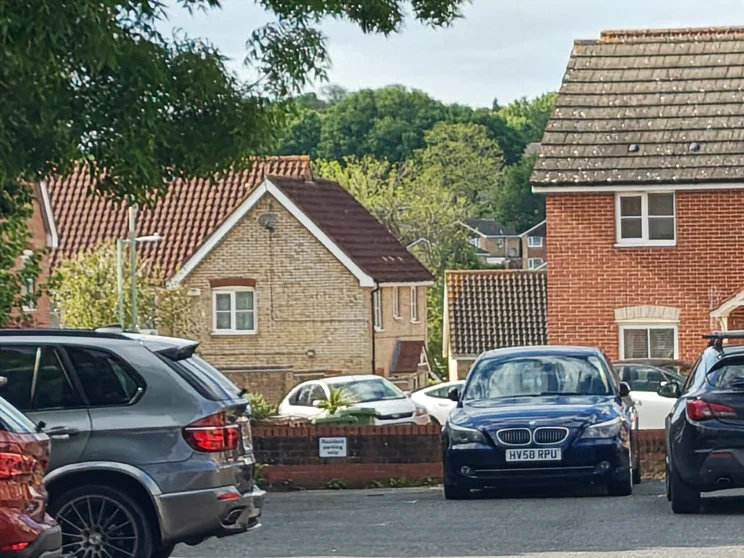




- Best flip phone performance yet
- … and best battery life, too
- Unrivalled cover screen
- Only three OS updates
- Cooling could be a problem
- Not the best colour accuracy
It’s once again time for a flip-girl summer and we’re starting the party with the Motorola Razr 60 Ultra. The Razr brand needs no introduction, having been synonymous with foldable phones for the better part of two decades, and earning the crown as my favourite flip phone with 2024’s Motorola Razr 50 Ultra.
That accolade is a double-edged sword, however, because the previous generation’s success has left some sizable shoes for the Razr 60 Ultra to fill. And yet, against all odds, this Cinderella smartphone manages to fit the shoes perfectly. Mostly, at least.
A couple of last year’s problems return here but they are far outweighed by the substantial improvements elsewhere, particularly in performance and battery life. You can save a few hundred quid by getting last year’s Razr 50 Ultra but, if you want the best flip phone around, the Motorola Razr 60 Ultra is top of the game right now.
Motorola Razr 60 Ultra: What you need to know
The Motorola Razr 60 Ultra makes a fair few changes from the last generation, starting with ditching Moto’s penchant for lower-performing processors and instead using the 4.32GHz Snapdragon 8 Elite. Backing up this powerhouse are the same 512GB of storage space as last year and 16GB of RAM (up from last year’s 12GB).































The battery is a fair bit larger than last year, swelling from a 4,000mAh cell to 4,700mAh. And charging sees improvements, too, with wired increasing from 45W to 68W and wireless doubling from 15W to 30W.
The main display is now a 7in pOLED panel with a sharper 2,912 x 1,224 resolution and that same lightning-fast 165Hz refresh rate, while the 4in AMOLED display on the cover is the same as last year, with a 1,272 x 1,080 resolution and a 165Hz peak refresh rate.































There’s also been a fairly big overhaul in the camera department, with the new 50-megapixel (f/1.8) main shooter joined on the rear by a 50-megapixel (f/2.0) ultrawide camera and a third 50-megapixel lens (again with an aperture of 2.0) set in a hole-punch notch atop the internal display for all your selfie needs.
Finally, with the focus on AI becoming increasingly central for brands, Motorola has followed the likes of the Nothing Phone (3a) and added a dedicated AI button.
Price and competition
The Razr 60 Ultra cots £1,099, wich is the same as the 512GB Razr 50 Ultra at launch – although that was quickly and permanently cut down to £999, so it will be interesting to see if this year’s model follows a similar trajectory or if this is, for all intents and purposes, a £100 price increase.































We don’t have word on Samsung’s inevitable Galaxy Z Flip 7 just yet, so the only tangible competition comes from last year’s handsets right now. The Samsung Galaxy Z Flip 6 is similarly priced, with the 512GB model £1,114 on Amazon, while the 256GB is only a little less, at £1,017. In short, then, if you strongly prefer Samsung, I’d wait for the Flip 7.
The Razr 50 Ultra, however, is a more immediate threat, costing just £709 on Amazon at the time of writing. And then of course, we have non-folding options at this price, most notably the Samsung Galaxy S25 Plus, which is currently £1,099 for the 512GB model.
Design and key features
Despite all of those big changes to the internals and cameras, the overall look of the Razr 60 Ultra is near-enough identical to its predecessor. Folded, it measures 74 x 16 x 88mm (WDH) and unfolded, it’s 74 x 7.2 x 172mm, both of which sets of measurements make it a hair bigger than the Razr 50 Ultra. Similarly, it weighs a little more than last year at 199g, up from 189g.































Motorola has made a few minor tweaks, however. The dust and water resistance rating has been bumped up to IP48 and the hinge has been completely redesigned, with a new titanium-reinforced plate that is apparently able to withstand up to 35% more folds than the previous generation. Not only that, it’s Motorola’s most discreet yet, to the point where it’s hard to see a crease in the middle of the display, even when the screen is switched off.
And covering the external display is now a sheet of Gorilla Glass Ceramic. This ceramic-based material is claimed to offer improved drop resistance on rough surfaces (like asphalt and concrete), compared with aluminosilicate glass such as the Gorilla Glass Victus used in the Razr 50 Ultra.































As we’ve come to expect from Motorola phones, there are four striking styles to choose from, each of which comes in a Pantone-approved colourway and a unique finish. My review sample is the black-green Scarab colour, which is paired with a soft, suede-like Alcantara rear. The Rio Red model has a vegan leather finish, the hot pink Cabaret is imitation satin while the Mountain Trail model uses real wood.
I find this all a little gimmicky, and my faux suede model in particular feels like it’s going to attract dust and stains quite easily. I do appreciate, however, that Motorola is trying something different. This is certainly not a phone you could accuse of looking boring.
Software and AI
The Razr 60 Ultra runs Android 15 out of the box and is set for three years of OS updates and four of security patches. That’s not awful by any stretch, but it is disappointing to see when Samsung has been committing to seven years apiece for the last couple generations of its foldables. If this two-party race continues to tighten, Motorola is really going to have to get less stingy with its software support.































The new AI button sits just above the hinge on the left edge and by default, you press and hold it to bring up the Moto AI menu, which gives you the usual choices of image generation, transcription, notification summarisation and contextual suggestions of next steps based on what’s currently on the screen. You can also program a double-tap of the key to quick-launch either the summarising Catch Me Up feature or the Take Notes transcription.
Also new this year is the Look & Talk feature, which allows you to start a conversation with the Moto AI chatbot just by looking at the cover screen while the phone is in either tent or stand mode. It’s one of those creepy “always watching” features I really don’t like, but it did at least work pretty seamlessly in my testing.
Displays
I already thought the 4in AMOLED display was essentially perfect on the Razr 50 Ultra – so it’s not a problem that Motorola hasn’t improved it here. If anything, I maintain that the 165Hz refresh rate is overkill and 120Hz would have worked just as well. As before, you can set any app of your choice to run on the cover screen, including the above Moto AI features, further cementing this as the most versatile and user-friendly external display on any flip phone.































The 7in AMOLED internal display itself gets nice and bright, hitting 1,098cd/m2 on adaptive brightness with a torch shining on the light sensor and a ridiculously bright 1,963cd/m2 when displaying HDR content. The higher 2,912 x 1,224 resolution doesn’t make any practical difference to your viewing experience, but that’s not a problem since it was already very sharp, and its 165Hz refresh rate makes scrolling and screen transitions feel incredibly fluid.
We’ve got Motorola’s standard three colour profiles here, with Vivid and Radiant offering different levels of bright, saturated colours for making your movies and games pop, while Natural aims for authentic sRGB reproduction. It didn’t quite hit the mark in my testing, with the average Delta E colour variance score coming back at 2.3, which is both quite far from the target of 1 or under and a little worse than the Razr 50 Ultra’s 2.05 result.
Performance and battery life
Previous Razrs have consistently fallen behind the competition on the performance front but Motorola has finally corrected this, fitting the Razr 60 Ultra with the flagship Snapdragon 8 Elite chipset.
Clocked at a zippy 4.32GHz and backed by 16GB of RAM, this chipset delivered a fantastic performance leap over the Razr 50 Ultra in the Geekbench 6 CPU tests. In the single-core tests, the Razr 60 Ultra performed 39% better than its predecessor, while in the multi-core element it went even better, with a whopping lead of 71%.
Odds are that the upcoming Samsung Galaxy Z Flip 7 will use a slightly overclocked “for Galaxy” variant of the Snapdragon 8 Elite, so it will probably be a little faster (check out the Galaxy S25 Plus below for an idea of how that chip performs) but for now, this is by far the best performance on any flip phone to date.
I ran into quite a dramatic overheating issue when trying to conduct our standard GFXBench GPU tests, with the phone pausing the app to warn me that it was overheating – also quite evident by the searing top half of the phone.
Once I got the tests to complete, though, the Razr 60 Ultra delivered predictably excellent framerates, with results that surpass all other flip phones and even rival the non-folding options here.
The overheating could speak to a cooling system that isn’t fully prepared to handle the magnitude of this beefed-up GPU but, in fairness, I never experienced anything close to it during normal gameplay. Indeed, I played a good chunk of Genshin: Impact on high graphical settings without encountering any overheating issues.
Between the larger battery and the proven power efficiency of the Snapdragon 8 Elite, I had high hopes for the Razr 60 Ultra’s battery life. As high as they were, the Razr 60 Ultra exceeded my expectations, lasting for an incredible 31hrs 40mins in our looping video test. That’s not only the best stamina we’ve ever seen from a flip phone, it’s some of the best phone battery life you can get from any handset, foldable or not.
Motorola has a habit of pushing the boundaries of charging speeds – it currently holds the top two spots on our fastest charging phones ranking – so it’s little surprise to see the Razr 60 Ultra offering the fastest charging on any compact foldable in the UK. In my testing, the 68W wired charging brought the battery up to 50% in 18mins and on to full in 47 minutes.
Cameras
The 50-megapixel (f/1.8) main camera may sounds identical to last year’s 50-megapixel (f/1.7) shooter but there’s a fairly substantial difference in the sensor sizes, with the Razr 60 Ultra using a larger 1/1.56in sensor (compared to the 50 Ultra’s 1/1.95in).
A bigger sensor means more total light capture, and typically results in better low-light performance and dynamic range in the final image. Shots captured by the main camera are bright and colourful, packed with contrast and crisp details.

That bigger sensor works overtime in low lighting, too, keeping the definition crisp in night photography – just look at how much the overhead wires stand out from the stark black sky in the image below.

I was a big fan of the Razr 50 Ultra’s 2x telephoto camera so it is slightly disappointing to see Motorola choosing to revert back to an ultrawide as the secondary shooter. Even still, it’s hard to see the 50-megapixel (f/2.0) ultrawide as a consolation prize, because it performs very well.
The colour balance matches the main camera closely, with decent dynamic range and strong contrast. The only downside is that detail falls off in the corners, but this is an issue that plagues most ultrawides, so don’t judge it too harshly.

The other benefit to the return of the ultrawide camera is the addition of a macro photography mode. And those extra megapixels really help bring out the detail in close-up images. In the image below, you can see clear definition in the spider’s web attached to the left-most petal, which is very impressive.

Perhaps the biggest changes come from the video side of things. As well as being able to shoot up to 4K at 60fps, the Razr 60 Ultra can now also capture 8k footage at 30fps and record in Dolby Vision, for all you budding filmmakers out there.
Motorola Razr 60 Ultra: Verdict
If you’re looking to dip your toe into the foldable waters, I’d consider saving a few hundred and picking up last year’s Razr 50 Ultra – it’s still an exceptional phone in its own right. If you want the very best flip phone for your money, however, the Motorola Razr 60 Ultra is an easy recommendation.
Even with its minor issues, the Razr 60 Ultra offers several significant upgrades over the previous generation, delivering the best performance and stamina we’ve seen from a flip phone thus far, along with an incredibly bright display, excellent cameras and once again, the best cover screen in the business. It’s going to take some fancy footwork for Samsung to come close to this quality, let alone surpass it.



